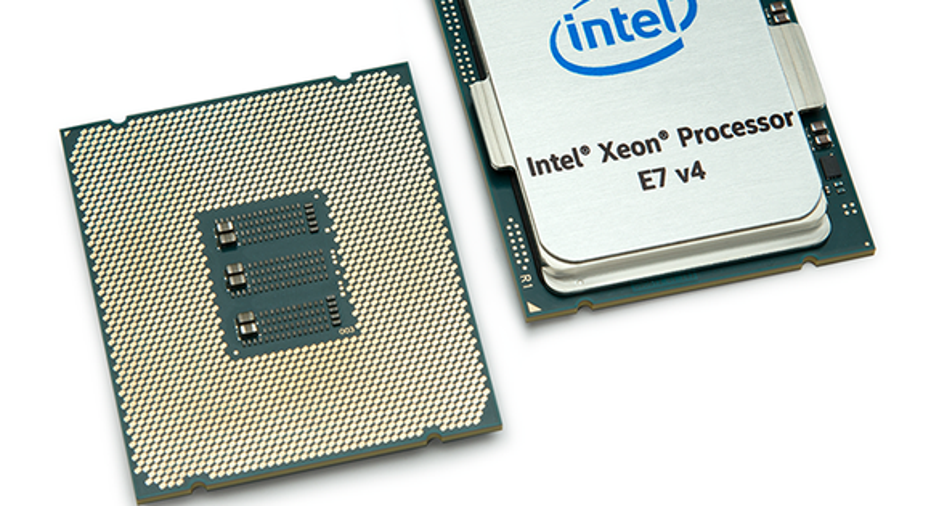Why Intel Corporations Data-Center Profits Dropped

Image source: Intel.
On Oct. 18, microprocessor giant Intel (NASDAQ: INTC) announced its financial results for the third quarter of 2016. Arguably, the most disappointing aspect of the results -- even though they were, in aggregate, quite good -- was the fact that the company's data-center group, or DCG, grew at just 10% year-over-year, missing expectations.
Although the top-line miss in this segment was disappointing, some investors might also be concerned that, even with 10% revenue growth in this segment, operating profit actually declined year over year from $2.13 billion to $2.11 billion.Or put another way, operating margin in this segment fell from 51.45% to 46.46%.
What drove this operating margin reduction? Let's take a closer look.
The ramp of 14-nanometer server chips
In the third quarter of 2015, Intel's latest server processors were manufactured in the company's mature 22-nanometer technology. By the third quarter of 2016, however, Intel's main server processor lineup had transitioned to the company's newer 14-nanometer manufacturing technology.This transition to chips built on this newer technology is a driver of the reduced profitability in Intel's data-center group, according to Intel.
The transition to the 14-nanometer tech allowed Intel to cram more processor cores into its new chips than it was able to with the 22-nanometer parts, thereby improving performance. However, because Intel's manufacturing yields on the newer technology still haven't reached full maturity, these new chips are more expensive to build than their predecessors.
Increased investments
The drop in profitability year over year isn't just driven by the transition to 14-nanometer technology -- operating expenses are on the way up, too."We have been very consciously increasing investment [in DCG] there; we see tremendous long-term opportunity, so that's been an ongoing process for us," Intel Executive Vice President Stacy Smith said on the call.
It makes perfect sense for Intel to bolster its spending in this segment. Many chip companies have been quite public about their efforts to try to capture share from Intel in the server market, so the appropriate response on Intel's part is to invest more to make sure its future products are at least as competitive relative to other offerings as its current products are today.
Looking ahead
The good news is that Intel is likely to see the margin headwinds associated with the 14-nanometer ramp fade next year as manufacturing yields are expected to continue to improve. So in a scenario where operating expenses stay flat and revenues grow for the year, I would expect Intel's operating profit to grow nicely next year.
However, it's not clear what Intel's plans are with respect to operating expenses in this segment going forward. It wouldn't be surprising to see Intel continuing to increase its investments here given the importance of DCG to the company's long-term future, but the magnitude of such an investment increase is something that won't become clear until the company's investor meeting in February of next year.
The good news, though, is that, as the 14-nanometer margin headwind abates, the company should have room to increase its investments while still delivering some level of profit growth -- assuming similar business dynamics to what this business saw in 2016.
A secret billion-dollar stock opportunity The world's biggest tech company forgot to show you something, but a few Wall Street analysts and the Fool didn't miss a beat: There's a small company that's powering their brand-new gadgets and the coming revolution in technology. And we think its stock price has nearly unlimited room to run for early in-the-know investors! To be one of them, just click here.
Ashraf Eassa owns shares of Intel. The Motley Fool recommends Intel. Try any of our Foolish newsletter services free for 30 days. We Fools may not all hold the same opinions, but we all believe that considering a diverse range of insights makes us better investors. The Motley Fool has a disclosure policy.